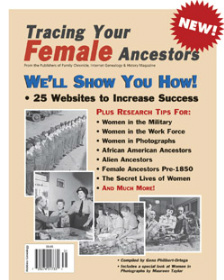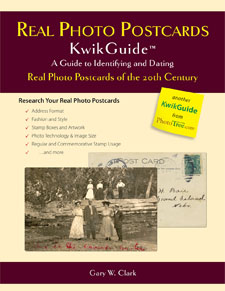Good Reads: New Sources at the NGS Conference
Biff Barnes
Genealogists and family historians might well agree to paraphrase political pundit James Carville, “It’s the sources.” Finding the right sources is the key to unlocking ancestor stories.

It’s day three today at the National Genealogical Society Conference in Las Vegas. We’ve been on the lookout for tips on new sources.
Ed Zapletal and Rick Cree of Family Chronicle Books showed us two newly released additions to their Tracing Ancestors series.
Tracing Your Colonial American Ancestors, by David A. Nash, explores a spectrum of sources beginning with more conventional ones like maps and newspapers and moving to less familiar sources including out of the box tips on locating vital records and how to find ancestors by tracing the records of their livestock. It includes features on using ship records, tax rolls, colonial census records, voting and poll books, probate and land records, records of political committees, and records of indentured servants. There is additional online state by state material available to supplement the printed version.
Tracing Your Female Ancestors, by Gena Philibert-Ortega advises, “Female ancestors are different, and shouldn’t be researched exactly like our male ancestors. Women historically did not always leave the same type of paper trail; a result of not having the same legal rights as their male counterparts.” Philibert-Ortega offers valuable insights and tips on how to techniques to uncover stories of female ancestors
 that won’t appear in the traditional channels of research. Of particular interest are lists of 25 online sources, manuscript collections, and university libraries which provide information on the lives of women. She also includes an excellent article on Writing Their Stories. [Full disclosure: Gena mentions Stories To Tell in the article] In addition photo expert Maureen Taylor discusses Women in Photos and offers tips on finding your ancestors in photographs.
that won’t appear in the traditional channels of research. Of particular interest are lists of 25 online sources, manuscript collections, and university libraries which provide information on the lives of women. She also includes an excellent article on Writing Their Stories. [Full disclosure: Gena mentions Stories To Tell in the article] In addition photo expert Maureen Taylor discusses Women in Photos and offers tips on finding your ancestors in photographs.
Gary Clark of PhotoTree.com released the third book in his Kwik Guide Series, Real Photo Postcards at the conference. In his Introduction Clark explains, “Postcards containing personal photographs or studio photographs are known as Real Photo Postcards. The use of real means that the postcard was created using the photographic process. It is a real photograph, developed on sturdy paper with postal markings like Address Here and Place Stamp Here preprinted on the back.” He explains, “Real Photo Postcards give us a look into the lives of our ancestors during the first few decades of the 20th century.” With the availability of affordable cameras, a more open lifestyle, and changes in postal regulations during the 1890s everyone wanted to share photos  with friends and relatives. “The best method was by postcard,” says Clark. “One could say it is similar to sending pictures via e-mail or text in the 21st century.” The book is a fascinating look at both how our ancestors looked and what they valued.
with friends and relatives. “The best method was by postcard,” says Clark. “One could say it is similar to sending pictures via e-mail or text in the 21st century.” The book is a fascinating look at both how our ancestors looked and what they valued.
All three publications provide plenty to interest and entertain any genealogist or family historian.